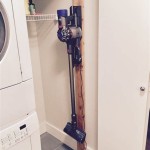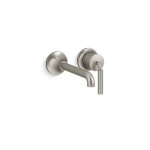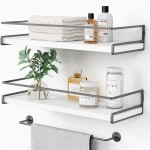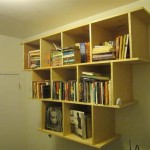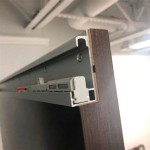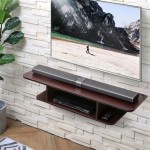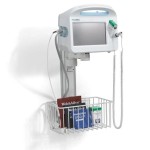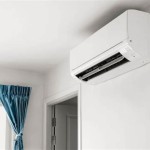Wall Mounts for Acoustic Guitars: A Comprehensive Guide
Acoustic guitars, prized for their rich tones and aesthetic appeal, often represent significant investments for musicians and enthusiasts. Proper storage is crucial not only for preserving their sound quality but also for protecting them from physical damage. While traditional guitar cases offer a secure environment, they can be impractical for daily playing and display. Wall mounts provide an elegant and space-saving solution, allowing instruments to be showcased while remaining readily accessible. This article delves into the various aspects of wall mounts for acoustic guitars, covering types, advantages, installation considerations, and potential drawbacks.
The primary function of a guitar wall mount is to securely suspend the instrument from a vertical surface. This accomplishes several objectives. First, it elevates the guitar off the floor, mitigating the risk of accidental bumps, knocks, and spills. Second, it makes the instrument visually available, encouraging more frequent practice and enjoyment. Third, it optimizes space, especially in smaller environments where floor space is limited. Finally, it transforms the guitar into a piece of art, contributing to the overall aesthetic of a room.
Types of Acoustic Guitar Wall Mounts
Guitar wall mounts are not one-size-fits-all. They vary in design, material, and intended application. Understanding the different types is paramount to selecting the most appropriate mount for a specific guitar and environment.
Horizontal Yoke Hangers: These are arguably the most common type of guitar wall mount. They consist of a yoke, typically padded with a soft material like felt or rubber, that cradles the guitar's headstock. The yoke is attached to a mounting plate that is secured to the wall. The guitar hangs with its body facing outward, displaying the entire instrument. Horizontal yoke hangers are suitable for most acoustic guitars, including those with asymmetrical headstocks.
Vertical Hangers: Unlike horizontal hangers, vertical hangers grip the guitar by its neck. The guitar hangs vertically, parallel to the wall. Vertical hangers can offer a more streamlined appearance and are particularly useful in spaces where minimizing protrusion from the wall is desired. However, they might not be compatible with all neck profiles, especially those with unusually thick or thin dimensions. Careful measurement and consideration are necessary before opting for a vertical hanger.
Shelf-Style Mounts: These mounts provide a small shelf on which the guitar's body rests. The neck may be held by a separate support or allowed to hang freely. Shelf-style mounts offer enhanced support for heavier guitars and can also accommodate accessories like picks or a tuner. They tend to be more substantial in appearance than yoke hangers and require more wall space.
Locking Mounts: Security is a significant concern for some guitar owners, particularly those with high-value instruments. Locking mounts incorporate a locking mechanism that prevents unauthorized removal of the guitar. This is typically achieved through a latch or a key-operated lock. While not foolproof, locking mounts offer an additional layer of protection against theft or accidental dropping.
Automatic Clamping Mounts: These mounts use a weight-activated clamping mechanism to secure the guitar. When the guitar is placed in the hanger, its weight triggers the clamp to close around the neck, holding it firmly in place. This provides a secure hold and prevents the guitar from accidentally falling. Releasing the guitar is typically done by lifting it upward, which disengages the clamp.
Adjustable Mounts: These mounts offer adjustable arms or supports, allowing them to accommodate guitars with varying body depths and neck widths. This versatility makes them suitable for owners who have multiple guitars or who anticipate acquiring different instruments in the future. Adjustable mounts can be more expensive than fixed-size mounts, but their adaptability can justify the added cost.
Advantages of Using Wall Mounts
Beyond aesthetics and space optimization, guitar wall mounts offer several practical advantages that contribute to the instrument's longevity and the player's overall experience.
Improved Accessibility: A guitar that is readily visible and accessible is more likely to be played. A wall-mounted guitar eliminates the need to open a case, tune the instrument, and find a suitable place to play. This ease of access encourages spontaneous practice sessions and allows musicians to integrate guitar playing more seamlessly into their daily routines.
Enhanced Protection: Contrary to popular belief, a guitar case is not always the safest place for an instrument. Cases can be bulky and inconvenient, leading to guitars being leaned against walls or left on chairs, where they are vulnerable to damage. Wall mounts elevate the guitar away from potential hazards, reducing the risk of accidental bumps, spills, and pet-related incidents. Furthermore, hanging a guitar allows air to circulate freely around the instrument, preventing moisture buildup that can lead to mold and mildew.
Space Optimization: Guitars, especially acoustic models, can occupy a significant amount of floor space when stored in cases. Wall mounts reclaim this space, making them ideal for smaller apartments, studios, and music rooms. By utilizing vertical space, wall mounts create a more open and organized environment.
Aesthetic Appeal: A well-maintained acoustic guitar is a beautiful object. Wall mounts transform the instrument into a piece of art, allowing its craftsmanship and design to be appreciated. A carefully positioned guitar can enhance the visual appeal of a room, creating a focal point that reflects the owner's passion for music.
Humidity Management: While not a direct function of the mount itself, the location of the guitar on the wall can indirectly improve humidity management. Positioning the guitar away from exterior walls and vents can help minimize exposure to extreme temperature fluctuations, which can negatively affect the wood. In dry climates, humidifying the room or using a guitar humidifier insert becomes more effective when the instrument is easily accessible on the wall.
Installation Considerations and Potential Drawbacks
Proper installation is critical for the safety of the guitar and the integrity of the wall. A poorly installed mount can result in the guitar falling and sustaining damage, or the mount itself pulling away from the wall. Furthermore, improper placement can expose the instrument to environmental factors that can compromise its condition.
Stud Location: The most important aspect of installation is anchoring the mount securely to a wall stud. Studs are the vertical framing members within a wall that provide structural support. Using a stud finder, locate a stud and mark its position. If a stud is not available in the desired location, use appropriate drywall anchors designed to support the weight of the guitar. Avoid relying solely on drywall screws, as they are unlikely to provide sufficient holding power.
Wall Material: Different wall materials require different types of anchors. Drywall, plaster, and brick each have unique properties that necessitate specific anchoring solutions. Consult with a hardware professional to determine the appropriate anchors for the specific wall material. Incorrect anchor selection can result in a failed installation.
Guitar Weight: The weight of the guitar is a crucial factor in selecting a wall mount. Ensure that the mount is rated to support the weight of the instrument. Exceeding the weight limit can lead to the mount failing and the guitar falling. Consider the guitar's weight when selecting both the mount and the anchors.
Environmental Factors: Avoid placing the guitar near direct sunlight, heating vents, or air conditioning units. These environmental factors can subject the instrument to extreme temperature and humidity fluctuations, which can damage the wood. Choose a location that is relatively stable in terms of temperature and humidity.
Potential Drawbacks: While wall mounts offer numerous advantages, there are some potential drawbacks to consider. One concern is the potential for dust accumulation on the guitar. A guitar that is left exposed on a wall will inevitably collect dust over time, requiring periodic cleaning. Another potential drawback is the risk of accidental bumps or knocks, especially in high-traffic areas. Finally, some guitar owners may be hesitant to drill holes in their walls or may be renting a property where wall modifications are prohibited. In these cases, alternative storage solutions may be more appropriate.
In conclusion, wall mounts for acoustic guitars offer a practical and aesthetically pleasing solution for storing and displaying instruments. By understanding the different types of mounts, considering the advantages and potential drawbacks, and ensuring proper installation, musicians can protect their guitars while enhancing their playing experience.

Guitar Hanger Holder Wall Mount Etsy

Best Guitar Wall Mounts Top Hangers

Openhagen Wall Mounts Hanger For Guitar Walnut

Guitar Wall Mounts American Furniture

Beacock String Swing Cc01k Wall Mount Guitar Hanger Narrow

3x Guitar Skateboard Wall Hanger Unique Design Bent Wood Mount Holder Acoustic Fruugo Tr

Donner Guitar Wall Mount Hanger 3 Pack Black Walnut Holder For Acoustic Electric Guitars Bass Folk Ukulele Violin Mandolin Banjo And String Instruments Wal Com

Guitar Wall Mount Mounting Racks Gearhooks

Hang Your Ukulele Mandolin Banjo With Openhagen Wall Mount Or Hanger

Gator Wall Mount Guitar Hanger Cherry Center

